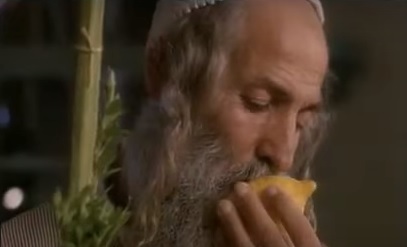
Moshe’s mentor.
KEY CHARACTERISTIC(S)
- Tiferet/Beauty in Harmony: The rabbi appears at two critical moments in the movie to provide the means for everyone to find balance. This reflects his role of Tiferet, beauty in harmony,
KEY SCENES
In the first meeting with Moshe, the rabbi focuses first on Mali, telling Moshe that the most important thing for him is to make her happy. He follows this up with an interesting comment, “It’s your way of worshiping. It’s your holiday.” Moshe then relates that his sukkot guests are not the greatest people, to which the rabbi replies that this is a good thing, as Moshe can work to elevate them spiritually. He then reiterates to make Mali happy. Thus the rabbi establishes a connection between Mali and “dealing with” the ushpizin. By effecting tikkun to the middot that need it (within Moshe, as represented by Eliyahu & Yosef) this enables the connection between Malchut (the etrog) and Binah (Mali) which will result in her becoming pregnant, which is her main source of sadness.
The second meeting takes place after Moshe has called Mali on the phone. Note how he holds the Etrog close to him while he speaks to her. Yesod and Malchut are very near, and seeking to unite with Binah. Between them are ‘the six,’ symbolized by Tiferet, the central middah of ‘truth,’ which is the rabbi in the story. Moshe (i.e., Yesod) has to go to the ‘truth’ one more time. A great deal of rectification has occurred (as we shall see with Eliyahu and Yosef) but there is still an element of Moshe’s anger to deal with.
Mali has separated herself from Moshe and is ‘in hiding’ as per the rabbi’s instructions. The rabbi imparts three specific and related truths to Moshe:
- Gam Zu LaTovah – It will all be for the best.
- There is no rest. Life is continuous “tikkun middot”
- Don’t get angry. (Lord, save us from anger.)
(See themes for more on the above.)
<< Return to Character Index
